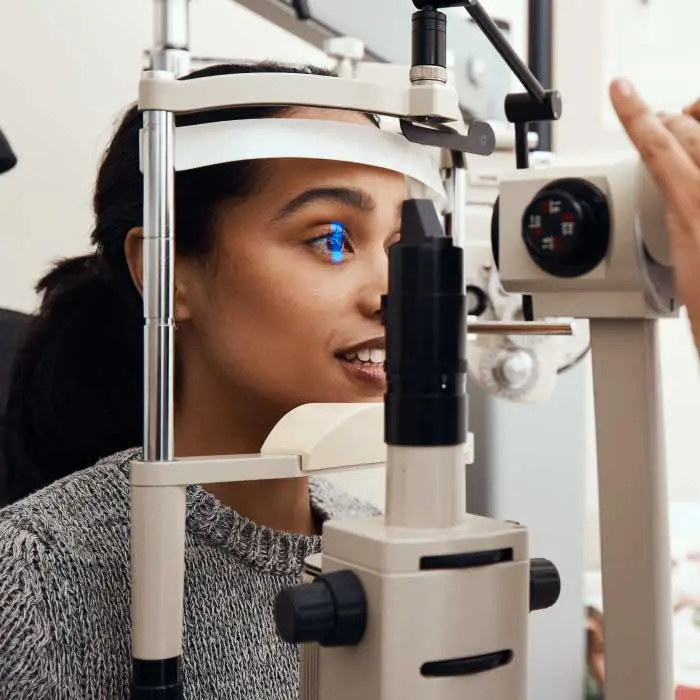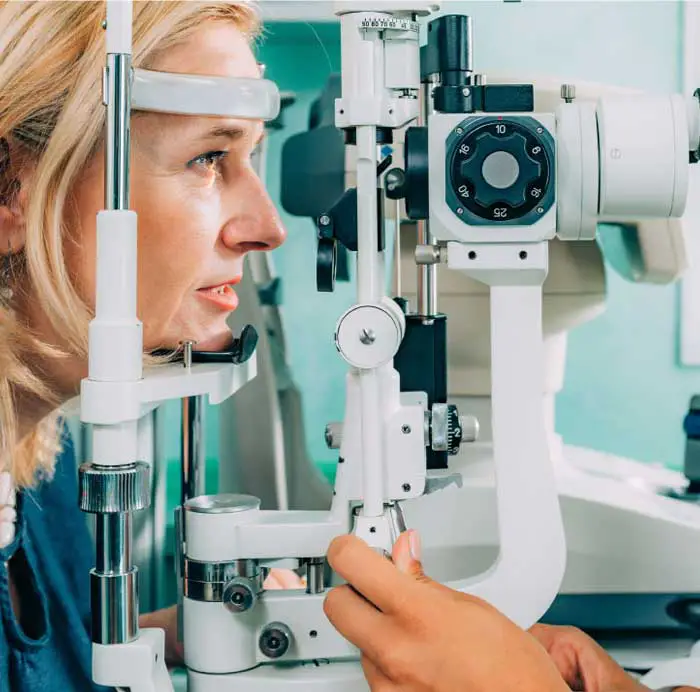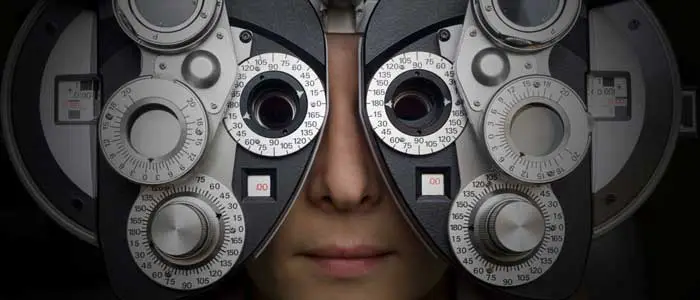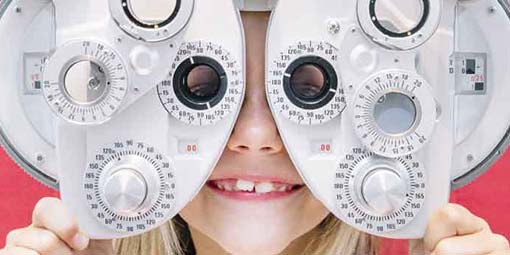Orbital Fracture - Symptoms, Causes and Treatment
07-04-2024
What is Orbital Fracture?
An orbital fracture is a break in one or more of the bones surrounding the eye, which make up the eye socket or orbit. This type of injury can occur due to trauma or impact to the face, leading to a variety of potential complications. Orbital fractures can vary in severity and may affect the function and appearance of the eye. It is important for individuals who suspect they have sustained an orbital fracture to seek prompt medical attention from a healthcare provider, such as an optometrist, for proper evaluation and management.What Are The Causes Of Orbital Fracture?
Orbital fractures are typically caused by trauma to the face, such as a direct blow or injury from a car accident or sports-related incident. The force from the impact can result in a fracture of the bones surrounding the eye, leading to swelling, bruising, and pain in the affected area. In some cases, the fracture may also be accompanied by damage to the surrounding soft tissues, including the muscles and nerves that control eye movement. It is important to seek prompt medical attention if you suspect you have sustained an orbital fracture, as proper diagnosis and treatment are essential for ensuring optimal recovery and preventing potential complications.What Are The Risk Factors For Orbital Fracture?
Risk factors for orbital fractures include trauma to the face or eye area, such as from a car accident, sports injury, or physical assault. Additionally, individuals who participate in activities with a high risk of facial injury, such as contact sports or construction work, are more likely to experience an orbital fracture. People with weakened bones due to conditions like osteoporosis or certain medications may also be at a higher risk for orbital fractures. Smoking and alcohol use can also increase the risk of sustaining a fracture in the orbital bone.What Are The Symptoms Of Orbital Fracture?
Symptoms of an orbital fracture may include swelling and bruising around the eye, pain and tenderness in the affected area, double vision or blurred vision, difficulty moving the eye or opening the eyelids fully, numbness or tingling around the eye, and a sunken appearance of the eye. In some cases, there may also be a noticeable change in the shape or position of the eye. It is important to seek medical attention if any of these symptoms are present following a facial injury.How is Orbital Fracture Diagnosed?
Orbital fractures are typically diagnosed through a comprehensive eye examination and imaging studies such as CT scans or MRI. During the eye exam, the optometrist will assess visual acuity, eye movements, pupillary reactions, and the alignment of the eyes. If an orbital fracture is suspected, imaging studies will be ordered to confirm the diagnosis and determine the extent of the injury. These imaging studies allow the optometrist to visualize the bones and soft tissues of the orbit in detail, helping to guide treatment decisions.How is Orbital Fracture Treated?
Treatment for Orbital Fracture depends on the severity of the injury. In mild cases, conservative treatment may be sufficient, including pain management and monitoring for any changes in vision or eye movement. For more severe fractures, surgery may be necessary to realign the bones and restore proper function of the eye socket. Surgical options may include using plates or screws to stabilize the bones, or in some cases, a procedure called orbital reconstruction may be performed to repair the fracture and improve the appearance of the eye area. It is important to follow up with an ophthalmologist or oculoplastic surgeon for proper evaluation and recommendations for treatment.Is There A Cure For Orbital Fracture?
There is no cure for an orbital fracture, as it is a type of injury that requires medical intervention to properly heal. Treatment options may include surgery to repair the fracture, as well as medications to manage pain and reduce swelling. It is important for individuals with an orbital fracture to seek prompt medical attention from an eye care professional to prevent potential complications and ensure proper healing. Regular follow-up appointments may also be necessary to monitor progress and address any ongoing issues.How Can Orbital Fracture Be Prevented?
Orbital fractures can be prevented by wearing appropriate protective eyewear during activities that pose a risk of facial trauma, such as sports or construction work. It is also important to practice safe driving habits to reduce the likelihood of being involved in a motor vehicle accident. In the event of a fall, it is important to take precautions to prevent head injuries by using handrails and other supports. Maintaining a healthy lifestyle and following safety guidelines can help reduce the risk of sustaining an orbital fracture. Schedule An Appointment
Adult Eye Exams
Our advanced eye exams consist of 25+ modern tests and digital scans to assess eye health, function, and visual acuity.

Child Eye Exams
Give your child a clear future with an annual eye exam from our experienced Edmonton optometrists.

Senior Eye Exams
Maintain your vision through your golden years with gold standard eye care from the optometrists at our Edmonton eye clinic.

Contact Lens Eye Exams
Our eye exams for contact lens wearers include test and digital scans to assess eye health, function, visual acuity, and lens fit.

Diabetic Eye Exams
Managing diabetes requires regular eye exams to ensure that diabetes is not causing irreversible vision loss.

Dilated Eye Exams
Dilating the eyes enables our Edmonton optometrists to see more of the eye so that you many never see less.
Our Edmonton Eye Exams Are Comprised Of 4 Phases Of Evaluation

1. Eye Exam Pre-Testing
Corneal Thickness | Intraocular Pressures | Visual Field
Pre-testing is a detailed process that gathers all necessary information for the optometrist in advance of the optometrist-administered eye examination. This process involves completing a detailed patient history, as well as a series of standard tests. Pre-testing is an essential part of the comprehensive eye exam process, providing valuable information and visuals for both the optometrist and the patient.
More About Pre-Testing »
2. Advanced Diagnostic Testing
Retinal Photography, OCT, Topography
eye-deology Vision Care differentiates itself from other clinics by having the most advanced modern diagnostic specialty testing equipment. Specialty equipment, such as a wide-angle high-resolution retinal imager, Optical Coherence Tomography (OCT), Humphrey Visual Field Analyzer and corneal topographer, ensures that patients receive the best comprehensive eye care.
More About Advanced Testing »
3. Optometrist Examination
Health Assessment & Disease Diagnosis
eye-deology Vision Care Edmonton optometrists perform a multitude of tests and assessments to evaluate ocular health, eye coordination, and visual acuity. In addition, they also evaluate the results of the tests and scans performed during pre-testing. As part of patient education, our optometrists also take the time to show and explain results to patients.
More About Doctor Exam »
4. Eye Glass Consult
Prescription | Lens Selection | Digital Fitting
If you require corrective lenses to improve your vision, our licensed opticians will customize their fit to your unique attributes, needs, lifestyle, and budget. Our opticians are happy to provide you with information about the latest eyeglass frame and lens technologies available so you can make informed decisions and begin seeing and looking your best.
More About Eyewear Consult »